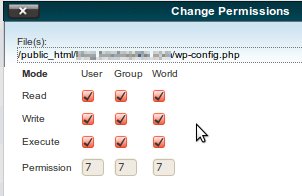Migrating your WordPress Site Information
File and Database Access
Like most applications that run on web servers, there's two parts:
- The Database
- The Application Files
In order to migrate your WordPress Site, you'll need to have access to both your WordPress Database and the files that make up your WordPress Site. If you don't have access to both, you'll need to contact your previous host to get this access.
Domain setup within cPanel
If the domain you are working with is your main domain, you can skip this step. If however this is going to be an addon domain, be sure that you have added this domain name as an addon domain within your Web Hosting Hub cPanel.
suPHP - Are you aware of the advantages?
Did you know that our servers run suPHP? What is suPHP you ask? suPHP is PHP, but it is running on our servers in a configuration optimized for security and ease of use. Most web hosts are not running suPHP, and so you're missing out on several of the advantages provided by suPHP:
suPHP is More Secure
suPHP runs as your user, instead of the 'nobody' user on the server. Because of this, permissions on your folders and files do not need to be left so wide open. If you're uploading pictures to your WordPress site, your folder's permissions would need to have been 777. With these permissions, if a vulnerability in WordPress, any of your plugins, or any other software on your account was found, hackers would be able to use it to their advantage to upload malicious content to those folders with 777 permissions.
No more File Ownership Issues
With suPHP, when you upload any files, such as a new template to your WordPress Site, the files are owned by your user. You may be wondering what is so special about this, that if I upload an image logically thinking it should be owned by myself?
On Linux servers, there is literally a user named 'nobody'. If your server wasn't running suPHP, then that WordPress template you uploaded would be owned by 'nobody', and would not be owned by your user. This would prevent you from manually editing those template files or deleting them from the server. With suPHP, you don't have to worry about this.


We value your feedback!
There is a step or detail missing from the instructions.
The information is incorrect or out-of-date.
It does not resolve the question/problem I have.
new! - Enter your name and email address above and we will post your feedback in the comments on this page!